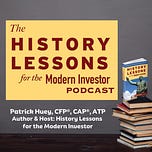On June 26, 1949, the Berlin Airlift ended.
The world watched as the nearly yearlong act of logistical daring and political resolve came to a close. In the wake of World War II, Berlin stood as a battered symbol: an island of democracy deep within Soviet-controlled East Germany, divided among four Allied powers and increasingly hemmed in by Cold War tensions. In June 1948, Stalin’s Soviet regime blockaded all ground access to West Berlin, aiming to force the Allies to relinquish their hold. Suddenly, two million civilians and Allied personnel were cut off from food, fuel, and basic supplies. Confronted with the prospect of withdrawing or risking all-out conflict, the United States and Britain instead embarked on a nearly unimaginable rescue: they launched a massive airlift, flying round the clock through narrow air corridors to deliver everything from coal and flour to medicine and children’s candy. Amid dangerous conditions, mechanical breakdowns, and relentless pressure, Western pilots landed a plane every three minutes, summoning global admiration for what came to be known as “Operation Vittles.” By the time the Soviets lifted the blockade in May 1949, more than 2.3 million tons of supplies had been delivered on over 277,000 flights. The final scheduled flights ended that June, cementing the airlift as a defining victory for resolve, innovation, and the moral clarity of standing by a promise—even when the world order seemed at risk. The Berlin Airlift did more than save a city; it demonstrated the economic, logistical, and psychological power of refusing to let pressure break principle.
Here are four Lessons for the Modern Investor from the Blockade of Berlin and the airlift that foiled it:
✈️ Resilience in the Face of a “Blockade”
The Berlin Airlift was born out of a total cutoff—no trains, no trucks, no bargaining table, just a city at the mercy of those holding the roads. Rather than panic, the Allies pivoted, mobilizing every resource to keep Berlin supplied by air. For investors, adversity or sudden “blockades” in markets (think: liquidity crunch, regulatory shifts, or a geopolitical crisis) require composure and creative problem-solving. Maintain contingency plans, remain flexible, and remember: some of the greatest successes are engineered under pressure, when the playbook must be rewritten. Resilience is not about avoidance—it’s about adaptation and consistency through the most trying circumstances.
✈️ Sustained Effort Beats a Flashy Response
The airlift wasn’t a quick fix. It demanded relentless daily effort—thousands of flights, repairs, and careful landings into fog-shrouded runways for nearly a year. Markets, like logistics, reward discipline over impulsive bursts of action. Written investment plans, dollar cost averaging, and regular portfolio reviews are the boring but powerful equivalents of determined airlift sorties. Big market shocks grab headlines, but steady, systematic strategies often ensure survival—and eventual triumph—when volatility and fear are at their peak.
✈️ Margins Matter—Prepare for Tight Landings
The air corridors to Berlin were narrow and unforgiving, with pilots landing heavy-laden planes round-the-clock under marginal conditions. Many flights succeeded only because of precise planning, prudent fuel management, and careful risk assessment. For investors, this translates to respecting margins of safety—don’t stretch your risk budget to the edge. Maintain cash reserves, allow yourself buffer room in volatile markets, and protect your investments with prudent safeguards against the unexpected. Sometimes the “safe landing” is the best possible outcome when navigating uncertainty.
✈️ Scarcity Forces Smart Resource Allocation
The Berlin Airlift was a dramatic, real-world lesson in the economics of scarcity and opportunity cost. With only so many planes, pilots, and slots on crowded runways, Allied planners had to make hard choices about what to fly in: a ton of coal or a ton of food? Medicine or machinery? Every decision to prioritize one vital supply meant something else was delayed or left behind. For investors, this underscores the importance of resource allocation—whether it’s cash, time, or attention, deploying resources where they yield the greatest return is central to success. And just as each flight had to be justified by its impact, every investment in your portfolio should be made with conviction, weighing not only potential gain but also what you’re giving up elsewhere. Scarcity isn’t just a limitation—it’s the discipline that sharpens focus and drives smarter choices.
A Final Thought
The Berlin Airlift endures as a symbol of unwavering commitment, thoughtful improvisation, and the strength found in sustained, cooperative effort. The world marveled as planes kept coming, day after day, until the prize—freedom and self-determination—was won. In today’s economic landscape, where “blockades” and surprises are inevitable, the lesson is clear: don’t let temporary crisis dictate your resolve. Build for resilience, rely on consistent effort, protect your margins, and make every allocation count in a world of limits.
This episode is sponsored by Victory Independent Planning. Ready to take the stress out of your retirement? At Victory Independent Planning, we put you on the right trajectory with our exclusive VIP Retirement Glidepath™️!
Schedule an assessment now: https://freebusy.io/victoryindependentplanning-VIP-Booking/phone-consultation
🎯Patrick Huey is a small business owner and the author of three books on history and finance as well as the highly-rated recently-released fictional work Hell: A Novel. As owner of Victory Independent Planning, LLC, Patrick works with families and non-profit organizations. He is a CERTIFIED FINANCIAL PLANNER™ professional, Chartered Advisor in Philanthropy® and an Accredited Tax Preparer. He earned a Bachelor’s degree in History from the University of Pittsburgh, and a Master of Business Administration from Arizona State University. Patrick previously served as a Naval Flight Officer from 1996-2005, earning the Strike Fighter Air Medal during combat operations and two Navy Achievement Medals. 👉🏻 Reach him at 877-234-8957 or schedule a time to talk using this link:
https://freebusy.io/victoryindependentplanning-VIP-Booking/phone-consultation
#Berlin #HistoryLessons #Planning #LearnFromHistory
Follow along for more insights, strategies, and reflections.






